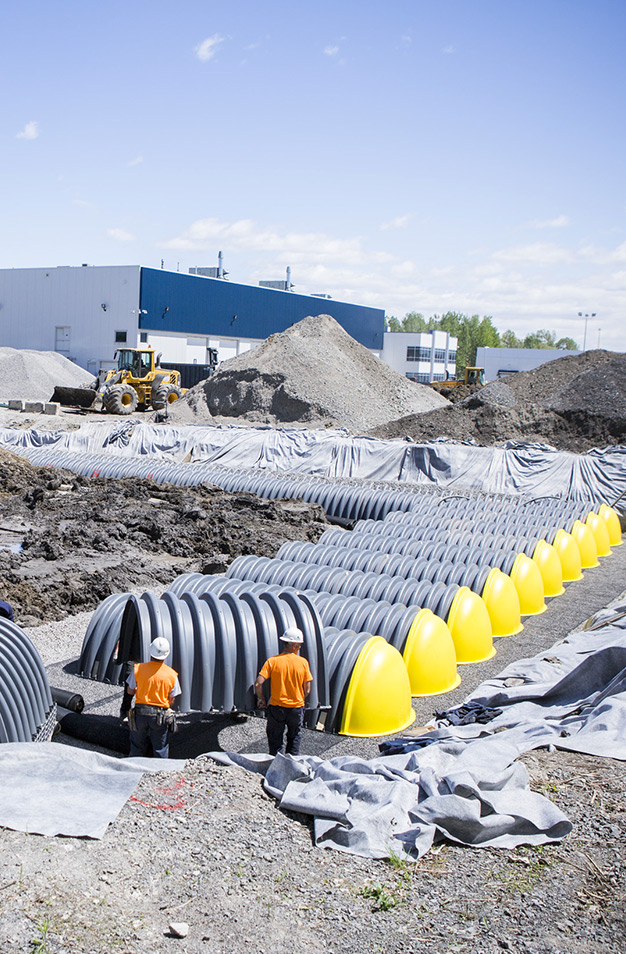Products
The configuration of the different pretreatment models allows a minimum accumulation of 25 % of its volume in sediment.
The pretreatment unit, installed upstream of a retention basin, captures sediments, oils and floating debris to prevent their migration to the retention system, thus averting any risk of clogging the clean stone. As a result of Stokes’ law*, fine particles remain trapped in the pretreatment unit. It is used to control the quality of runoff water in urban areas. The pretreatment unit retains particles of 100 microns or more, from very fine to very coarse sand, and effectively removes total suspended solids (TSS).
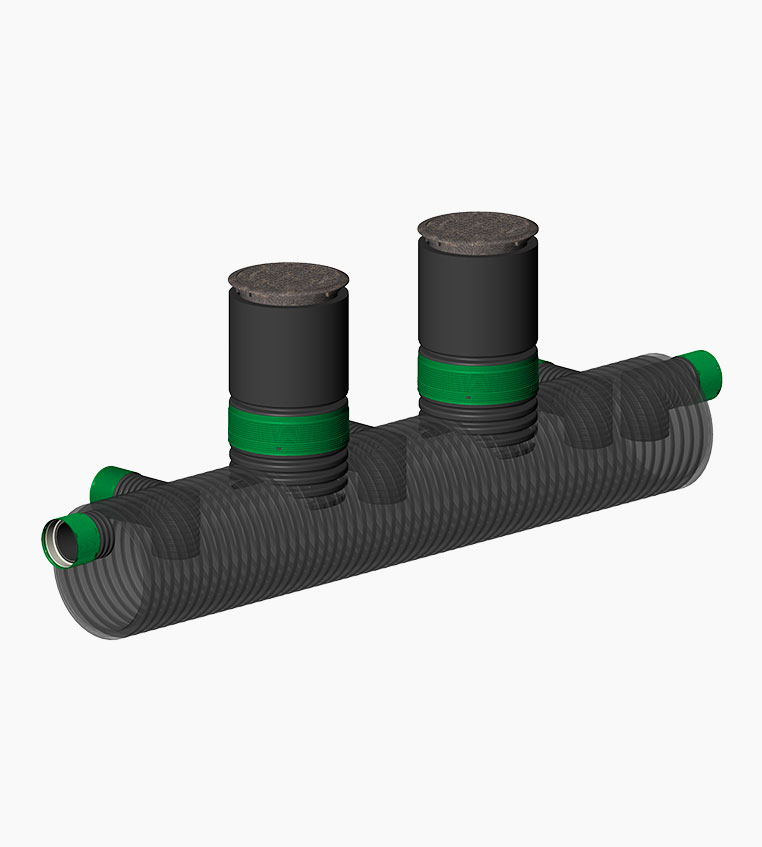
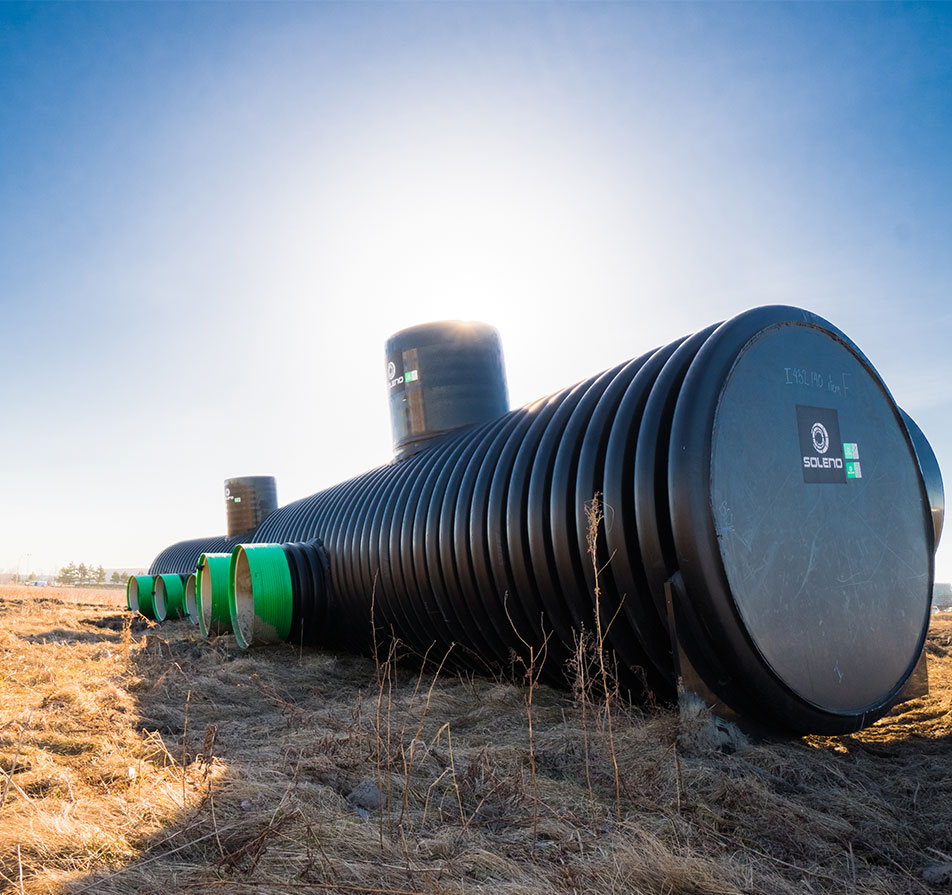
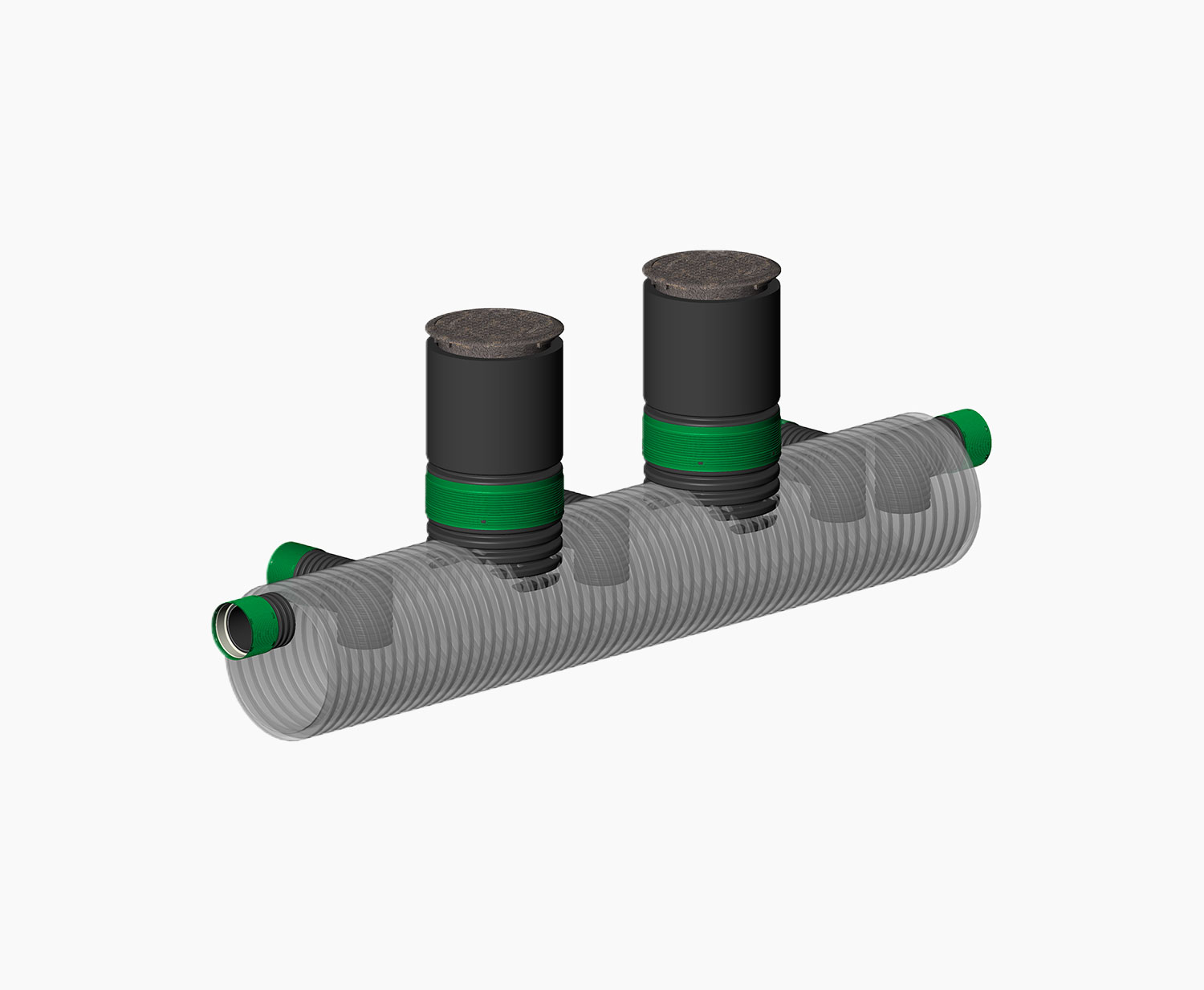
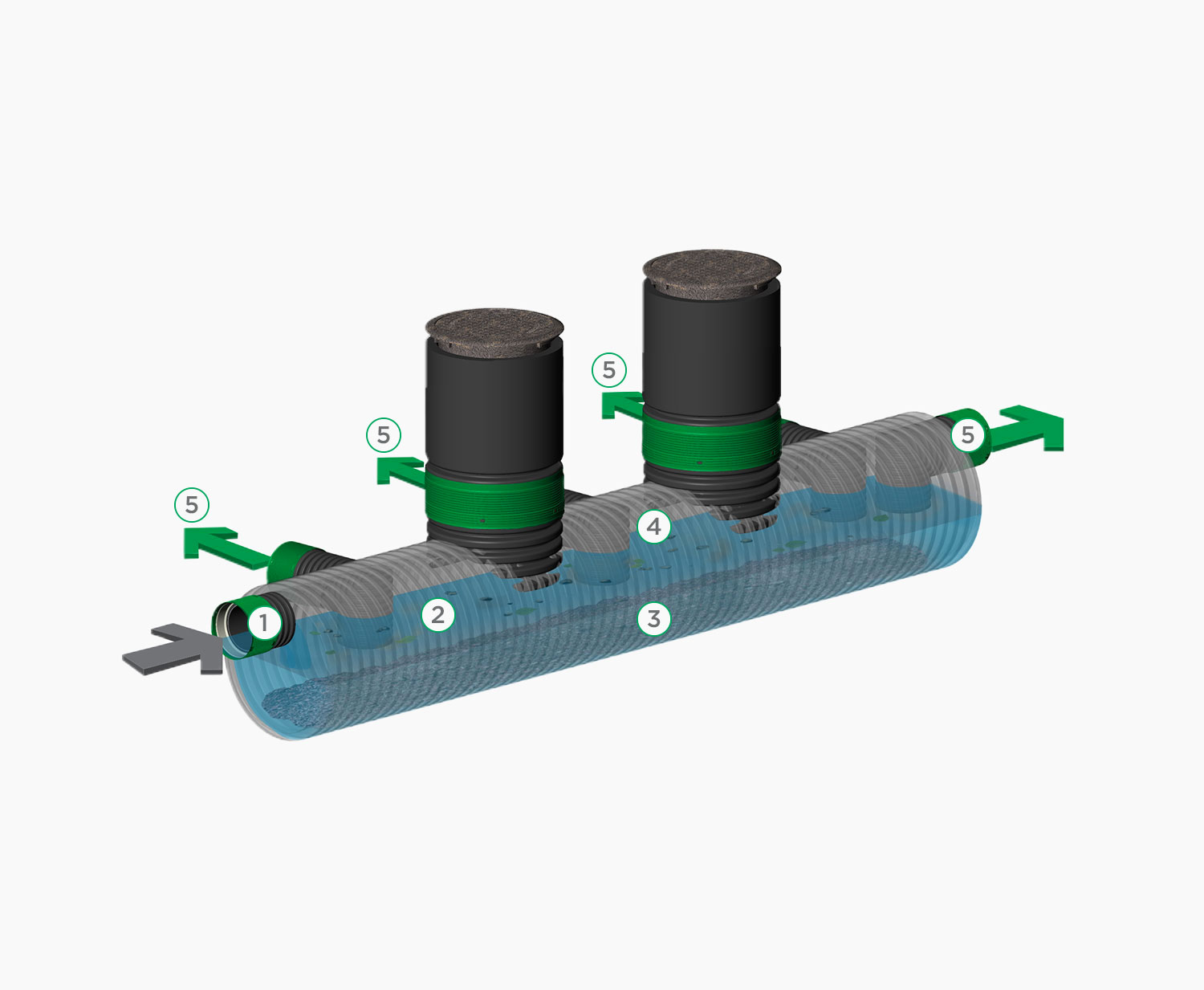
1. When it rains, surface runoff carries suspended sediments, oils and floating debris. Collection systems direct water to a storm water sewer which channels it to a pretreatment unit.
2. When water carrying suspended pollutants enters the tank, its velocity is reduced to begin the settling process.
3. Suspended solids are deposited through settling at the bottom of the unit.
4. Because of its permanently submerged water intakes, the pretreatment unit ensures retention and accumulation of floating pollutants.
5. The pretreatment unit acts directly at the source to prevent pollutants dispersing through the whole storm water sewer network.
Try our new Design Tool! Create your storm water retention system in storage chambers in just a few clicks! Sol’O Design is the most advanced engineering tool on the market allowing exclusively:

Inspection and maintenance: inspection and maintenance are facilitated by one or two chimneys providing access to recover oils and sediments.
Pipe connections: our systems are custom designed with a range of entry diameters at various configuration angles. Fittings for inlets and outlets are available to facilitate connections.
Separation by settling: gravity is used to separate suspended solids and oils.
Retention capacity: the volume of contaminants retained by the pretreatment unit is related to the diameter and length of the unit.
Design of 4 retention systems totalling 13,827 m3 installed under the central park and parking lots.
Brossard, QC
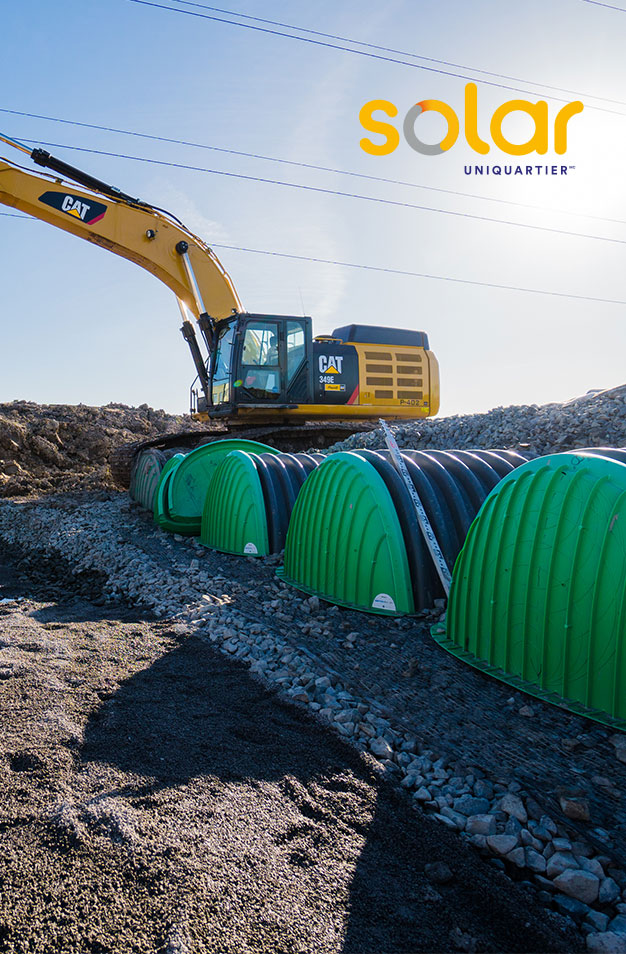
Construction of a pumping station and a retention basin for watersheds of rainwater.
Rosemère, QC
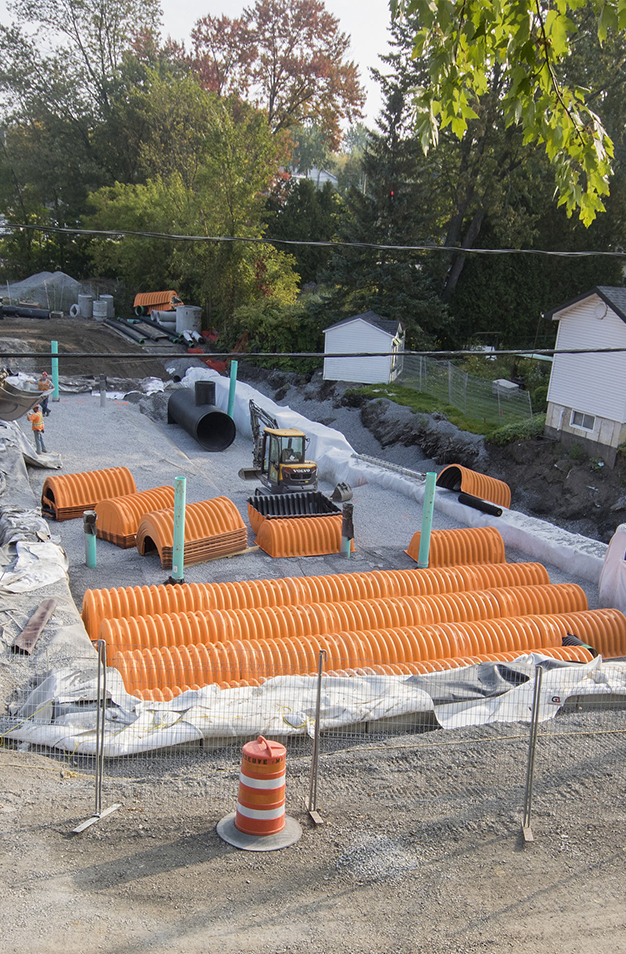
Storm water storage: a simple and customized solution
Laval, QC
